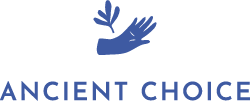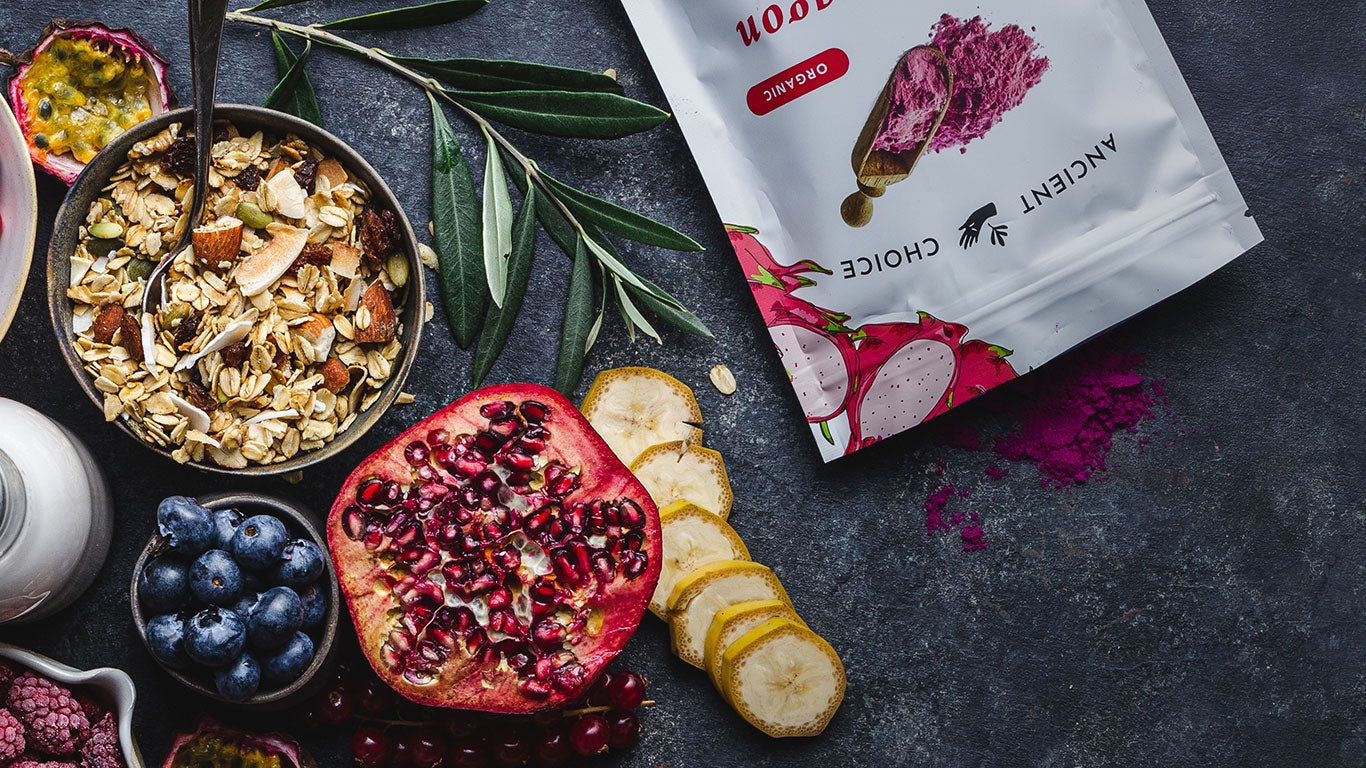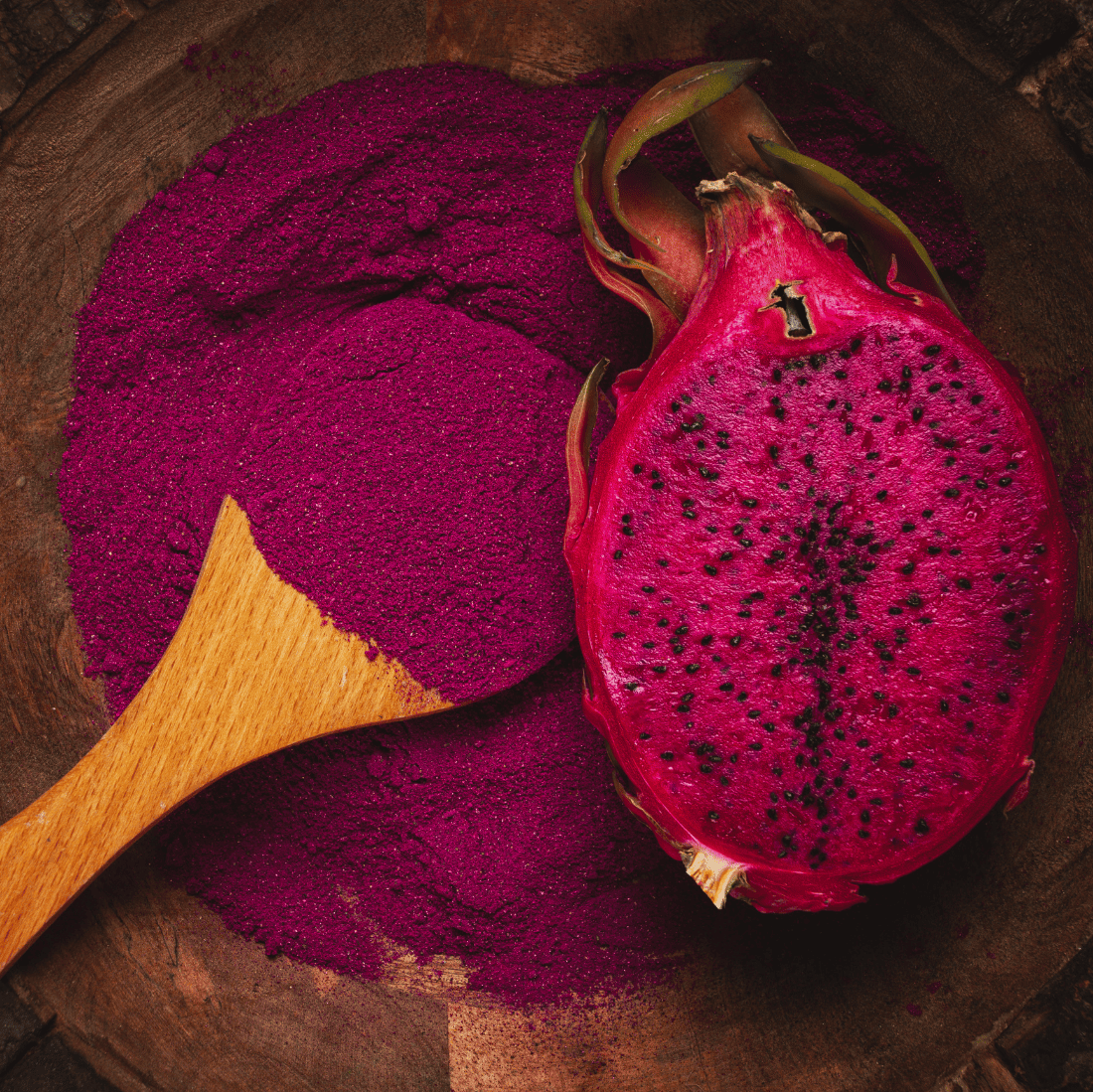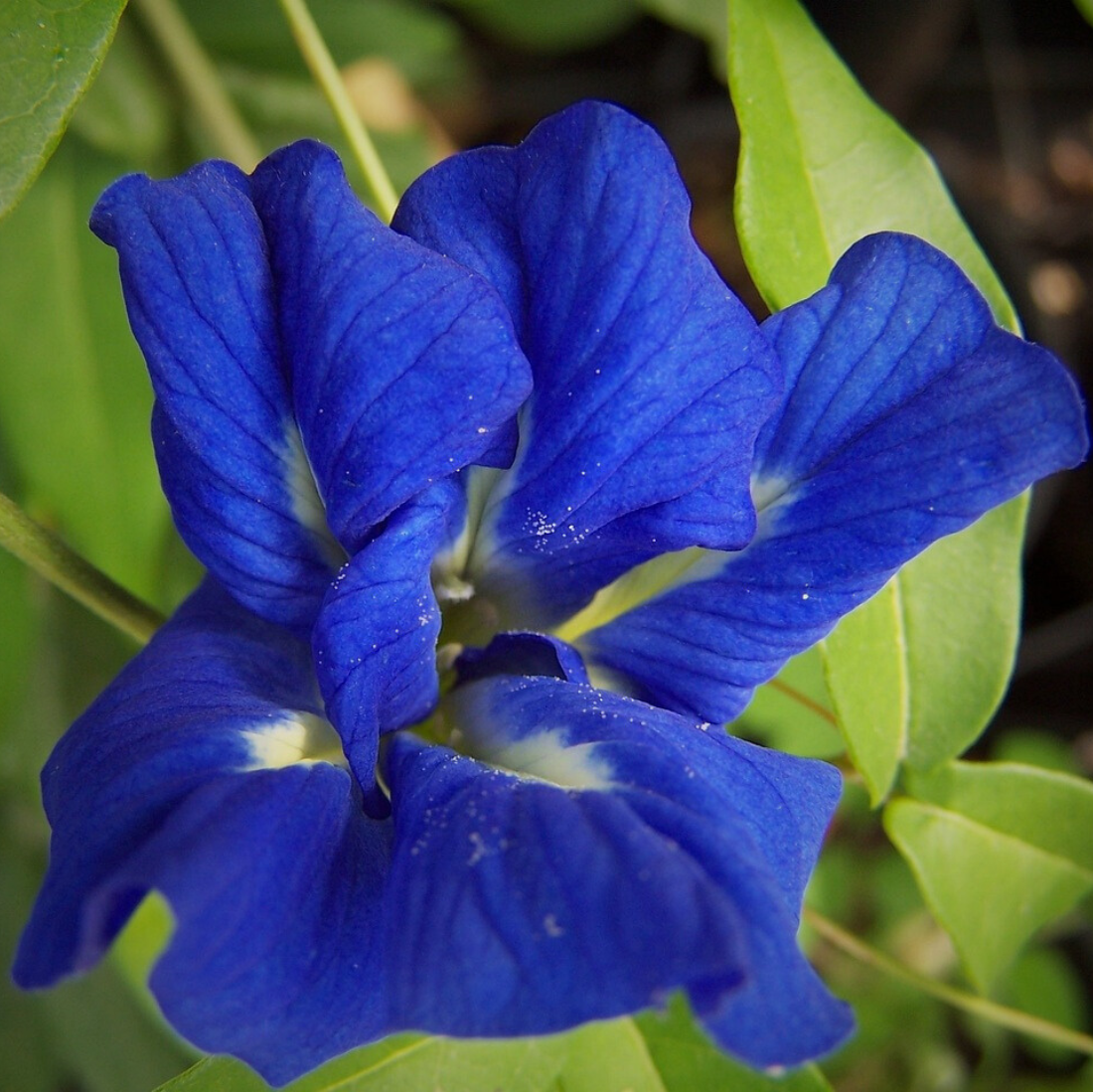
The first step to a proper diet is learning about macronutrients.
Those are proteins, fats, and carbohydrates. These provide the bulk of our energy.
Then of course, we have our micronutrients.
Those are the vitamins and minerals that we need to maintain our physiological functions.
Some are “essential,” meaning they cannot be produced by our bodies and must be acquired in our diet.
Other micronutrients may not be necessary, but they can make a huge impact on our overall health.
Today we will look at a group of micronutrients called anthocyanins.
What Are Anthocyanins?
The word anthocyanin derives from the Greek words anthos (flower) and kyanos (blue).
As you may have guessed, anthocyanins are responsible for giving blue and purple color to many of your favorite fruits, vegetables, and flowers.
Anthocyanins are a type of phytochemical which plants produce to protect themselves against environmental stressors like cold temperatures, drought, and UV radiation.
Blueberries, purple carrots, red cabbage - these all get their beautiful color from our good friends, the anthocyanins.
Summary
Anthocyanins are red, blue, and purple pigments found in plants with antioxidant properties.
Are Anthocyanins Good For You?
All signs point to yes, a diet rich in anthocyanins is good for you.
Research is still developing and much remains to be learned.
However, there is strong evidence that these compounds are anti-inflammatory, antiviral, gastroprotective, anti-cancerous, and protect against age-related diseases, type 2 diabetes, cardiovascular disease, and much more (1, 2, 3, 4).
The mechanisms for these health benefits are not fully understood, but they are likely at least partially due to the antioxidant properties of anthocyanins.
Summary
Research strongly implies that diets rich in anthocyanins may improve health.
Which Foods Contain Anthocyanins?
You may have heard that you should “eat the rainbow,” meaning that you should eat a diet with many differently colored foods.
The idea is this: if you are eating a variety of colors, that means you are probably eating a variety of foods, and ultimately this may help keep your macronutrients and micronutrients in balance.
It’s hardly a fool-proof guideline, but it has its merits, especially if it reminds you to get blue foods in your diet.
Blue and purple foods rarely occur naturally so they may be the hardest for you to find, but they are also some of the healthiest options.
Here are some ideas for getting anthocyanins in your diet:
- Haskap Berries
- Blueberries
- Black Raspberries
- Purple Sweet Potato
- Purple Carrots
- Butterfly Pea Flower
- Pomegranate
- Red Cabbage
- Black Currants
- Blackberries
Summary
Anthocyanins are commonly found in fruits and vegetables with red, blue, purple, or black colors. Berries tend to have the highest concentrations of anthocyanins.
Cardiovascular Disease
Heart disease is the leading cause of death for both men and women (5).
You are never too young to start thinking about heart health.
But a healthy heart is not built overnight.
Eating a balanced diet and exercising regularly are the first things you should consider to improve your heart health.
Anthocyanins may also improve heart health, according to several studies.
One study, published in The American Journal Of Clinical Nutrition, found that anthocyanin intake was associated with lower arterial stiffness and central blood pressure (6).
The study looked at nearly 2000 participants, all of whom were twin females.
Twins were used so that the results would not be skewed by genetics.
The participants had an average age of 46, ranging from 18-75 years old and found that across all controls, a diet rich in anthocyanins led to improved heart health!
Most of the anthocyanins consumed by the participants were through berries and wine.
Could this help explain the health benefits associated with an occasional glass of wine?
That’s probably a question best answered by more research, but the point stands: anthocyanins likely have a role in preventing cardiovascular disease.
Antiviral
Following the COVID-19 outbreak, people are more aware than ever of the danger posed by viruses.
Even when they don’t cause global pandemics, viruses can threaten our health.
Most of us have had the flu at some point, and we all know how awful it can be.
Luckily, there are ways to avoid it.
The best way?
Wash your hands!
But what else can we do?
Research shows that eating a diet rich in anthocyanins may be helpful.
A study published in 2014 found that berry extracts high in anthocyanin content stopped the growth of the CV-B1 and influenza viruses (7).
A 2008 study found that Japanese plum juice, rich in anthocyanins, was effective in battling the influenza A and B, H1N1, H3N2, H3N2 viruses (8).
Elderberry extract used in a 1995 study was effective in inhibiting 10 different influenza strains (9).
There are literally thousands of papers with similar results, most showing that anthocyanins have the potential to both prevent viral infection and improve recovery time.
However, more research is needed before we fully understand the antiviral mechanisms and develop suitable antiviral therapies.
Antibacterial
Cooties might not be real, but bacteria sure is!
Even common bacteria cause disease.
For example, Helicobacter pylori (H. pylori) is a bacteria that can live in the digestive tract for years, eventually causing stomach ulcers or even stomach cancer.
The scariest part?
H. pylori is super common, with an estimated two-thirds of the world’s population infected.
The most important way to avoid bacterial infection is to wash your hands and keep food clean.
But there may be more you can do.
A 2010 study published in Natural Product Communications found anthocyanins were significantly effective against bacterial infection (10).
When the researchers studied just how anthocyanins worked against bacteria, they determined that the antimicrobial abilities of anthocyanins were “likely to be caused by multiple mechanisms and synergies.”
One of the mechanisms for fighting bacterial infection is to interrupt the “adhesion” process.
This is just how it sounds.
In order to infect a host, bacteria needs to adhere to cell walls.
If you can stop the adhesion, you may prevent the infection.
A 2018 paper evaluated the health benefits of the haskap berry, which is known for being extremely rich in anthocyanins, as much as 13 times more than blueberries (11).
A great number of health benefits were attributed to the consumption of haskap berry, including the interruption of the adhesion process of several types of pathogenic microbes (“bad” bacteria).
The berry’s ability to reduce bacterial adhesion has been studied before.
In this 2008 paper, the researchers found that the anthocyanins in haskap berries were effective in reducing the adhesion of Staphylococcus epidermidis (“staph” infections), Enterococcus faecalis (various infections including UTIs and meningitis), and Streptococcus mutans (which causes “strep throat”).
Probiotic
There is a special term for a food that discourages bad bacteria without disrupting good bacteria.
It’s probiotic!
And anthocyanin rich foods have been shown to be just that.
In a 2013 study published by the National Institute Of Health, researchers found that blackberry extract could reduce “metabolic activity of oral periodontopathogens while demonstrating minimal effect on commensals (12).”
In other words, the blackberry extract kept bad oral bacteria in check without affecting the good bacteria.
The probiotic nature of anthocyanins has been well studied elsewhere.
In another haskap berry study, researchers found that the berry was “highly effective against Bacillus subtilis, Kocuria rhizophila, and Campylobacter jejuini growth” as well as Escherichia coli (the infamous E. coli) (13).
Yet the haskap berry had “no negative effects on health-related bacteria” making it a “good candidate as a probiotic food.
Anti-cancerous
The number of new cancer cases in the world is on the rise (14).
This is partially because people live longer.
But it’s also because exposure to cancer risk factors is increasing.
Some risk factors, like tobacco and radiation, can generally be avoided.
Others, like the sedentary lifestyle associated with office work, are more difficult to adjust for, especially if your paycheck depends on it.
We can only limit our exposure to risks so much.
After reducing risks, you may also consider increasing your protective factors.
Can anthocyanins help protect against cancer?
The research is still developing, but the results so far are promising!
A 2009 study performed on rats found that freeze-dried black raspberry significantly reduced tumor growth and even triggered apoptosis (cell death) in cancerous cells (15).
The researchers found that the anti-cancer effects were mostly thanks to the anthocyanins in black raspberries, specifically cyanidin-3-O-glucoside and cyanidin-3-O-rutinoside.
Fortunately, the encouraging science extends beyond rats.
A Korean study published in the International Journal Of Oncology looked at the effects of anthocyanins on colon cancer and found similar results, with anthocyanins regulating apoptosis of cancerous cells (16).
Research is heading in the right direction, but today the fight against cancer still mostly depends on chemotherapy drugs.
Yet it’s more important than ever to develop non-toxic solutions.
Why?
It’s because while medical science continues to extend our lives, living into old age brings about a higher risk of developing cancer and a higher rate of cancer-related mortality.
Elderly patients also have a higher risk for side effects from conventional chemotherapy drugs, making their battle for cancer that much tougher.
Hopefully, research will lead to less toxic methods of battling cancer, and make the battle less uncomfortable and perhaps even more effective.
Diabetes
According to the CDC, type 2 diabetes now affects more than 34 million Americans, the highest number on record.
Although the exact cause of type 2 diabetes remains unknown, diet is understood to be a major factor.
In particular, avoiding excess sugar intake and maintaining an active lifestyle are correlated with a lower risk of diabetes.
What about anthocyanins? Can they help prevent diabetes?
It seems that they may!
A 2012 study looked at various dietary flavonoid compounds, including flavonols, flavones, flavanones, flavan-3-ols, and anthocyanins.
By now you won’t not be surprised to find that anthocyanins were the big winner.
The study concluded that “a higher consumption of anthocyanins and anthocyanin-rich fruit was associated with a lower risk of type 2 diabetes (17).”
How does it work?
Diabetes occurs when the body has difficulty either creating or responding to insulin.
In other words, the body develops insulin resistance.
Insulin resistance is problematic because the body uses insulin to regulate blood sugar levels.
Anthocyanins may lower the risk of diabetes by naturally enhancing insulin sensitivity.
This 2017 study supports this, stating “anthocyanin rich extracts were found to be effective in ameliorating the insulin resistance condition and also increase insulin sensitivity, decrease body weight gain and accumulation of lipids (18).”
Although these findings are promising, there is still much more research to be done before specific recommendations can be made.
The Summary
Anthocyanins are antioxidants found in plants as red, blue, and purple pigments.
Some foods are especially rich in anthocyanins, including haskap berries, black raspberries, and blueberries.
Anthocyanins are associated with many beneficial qualities such as antiviral, anti-inflammatory, probiotic, and anti-cancerous.







